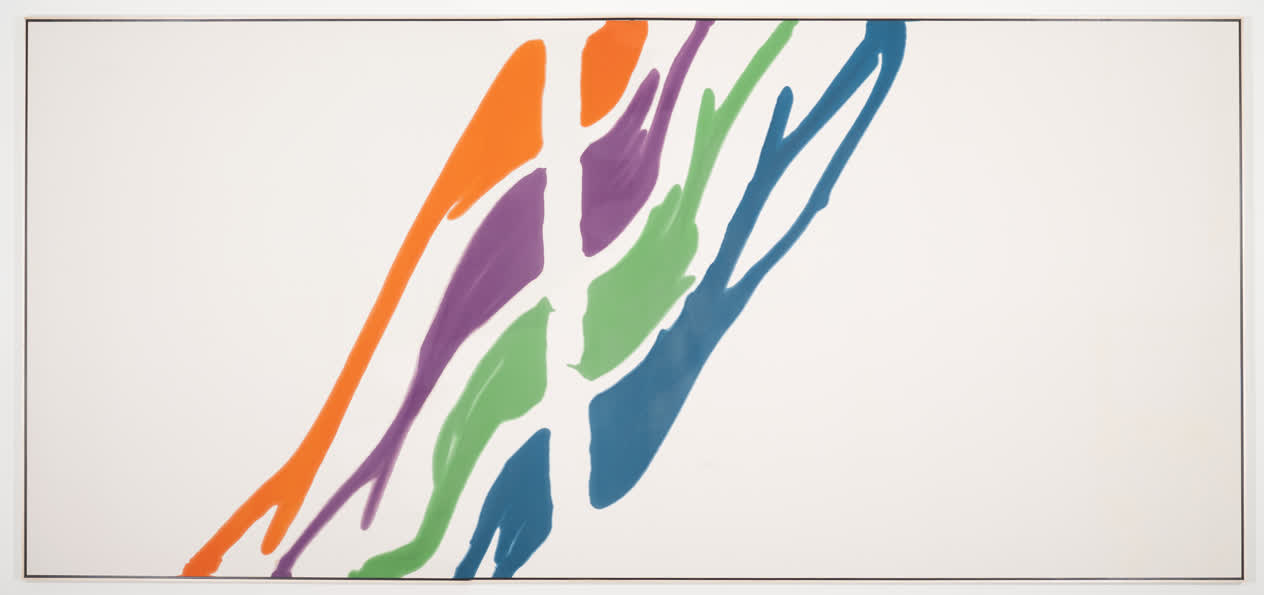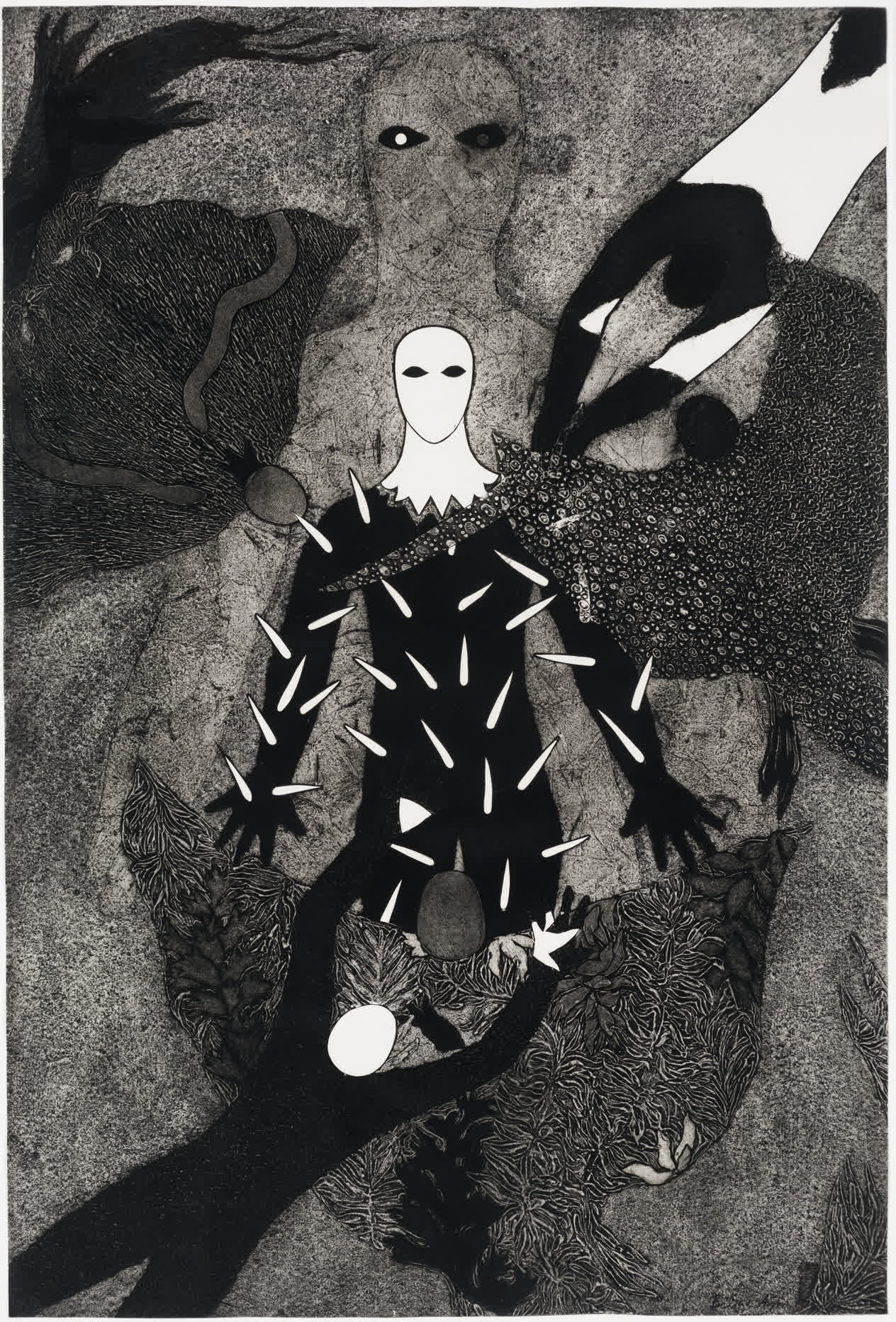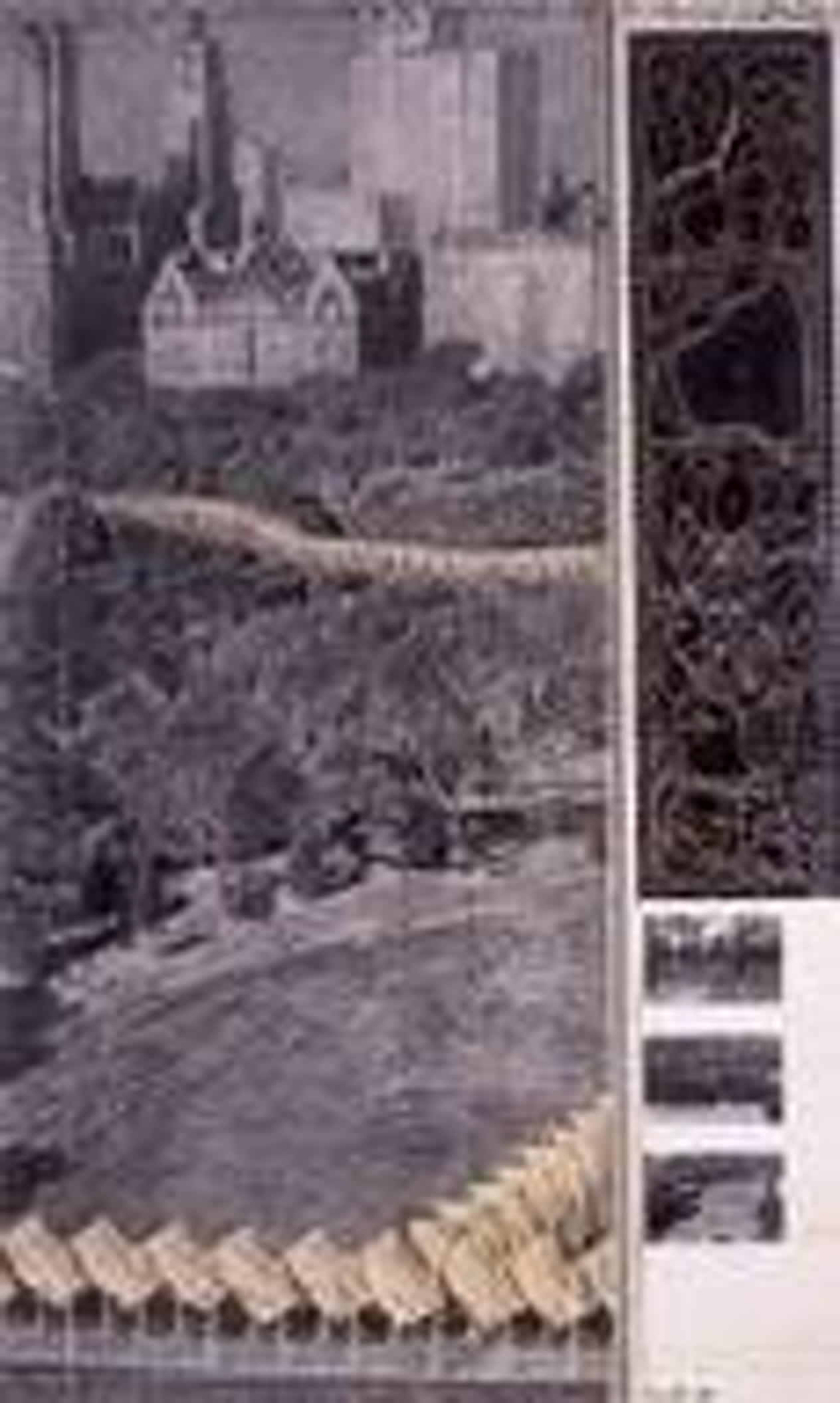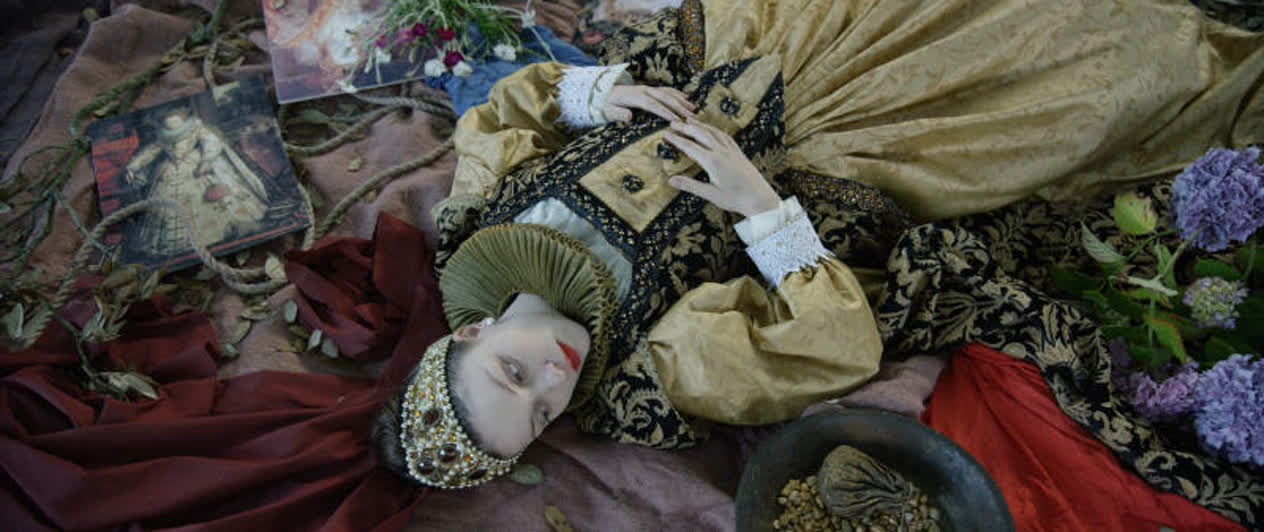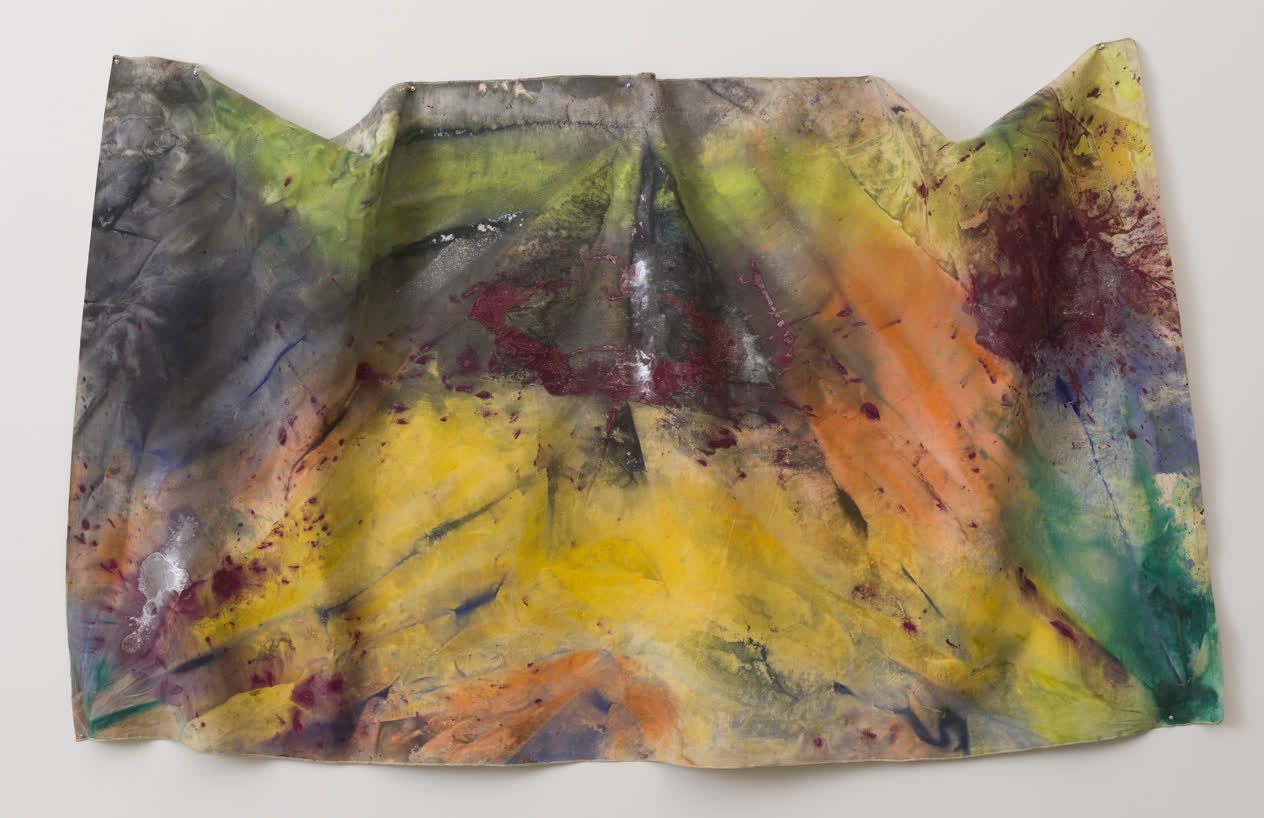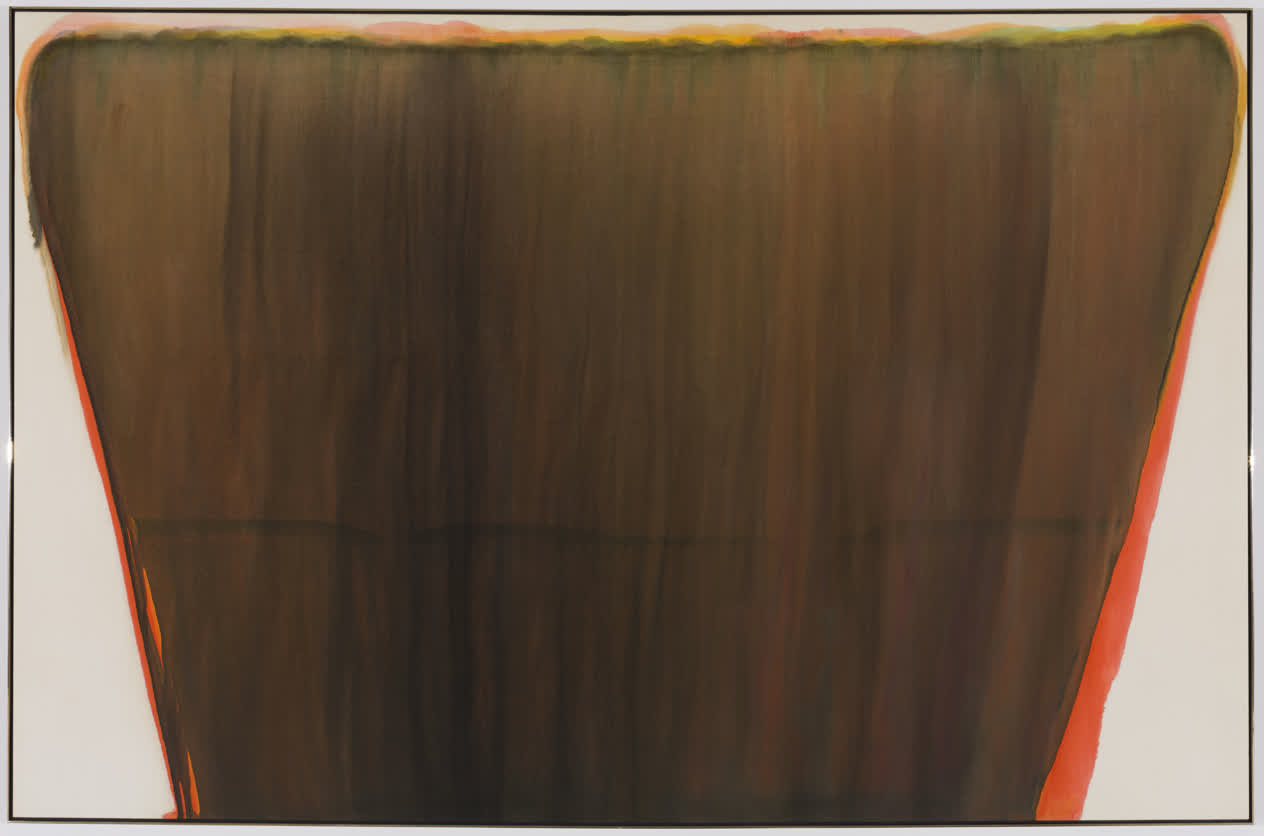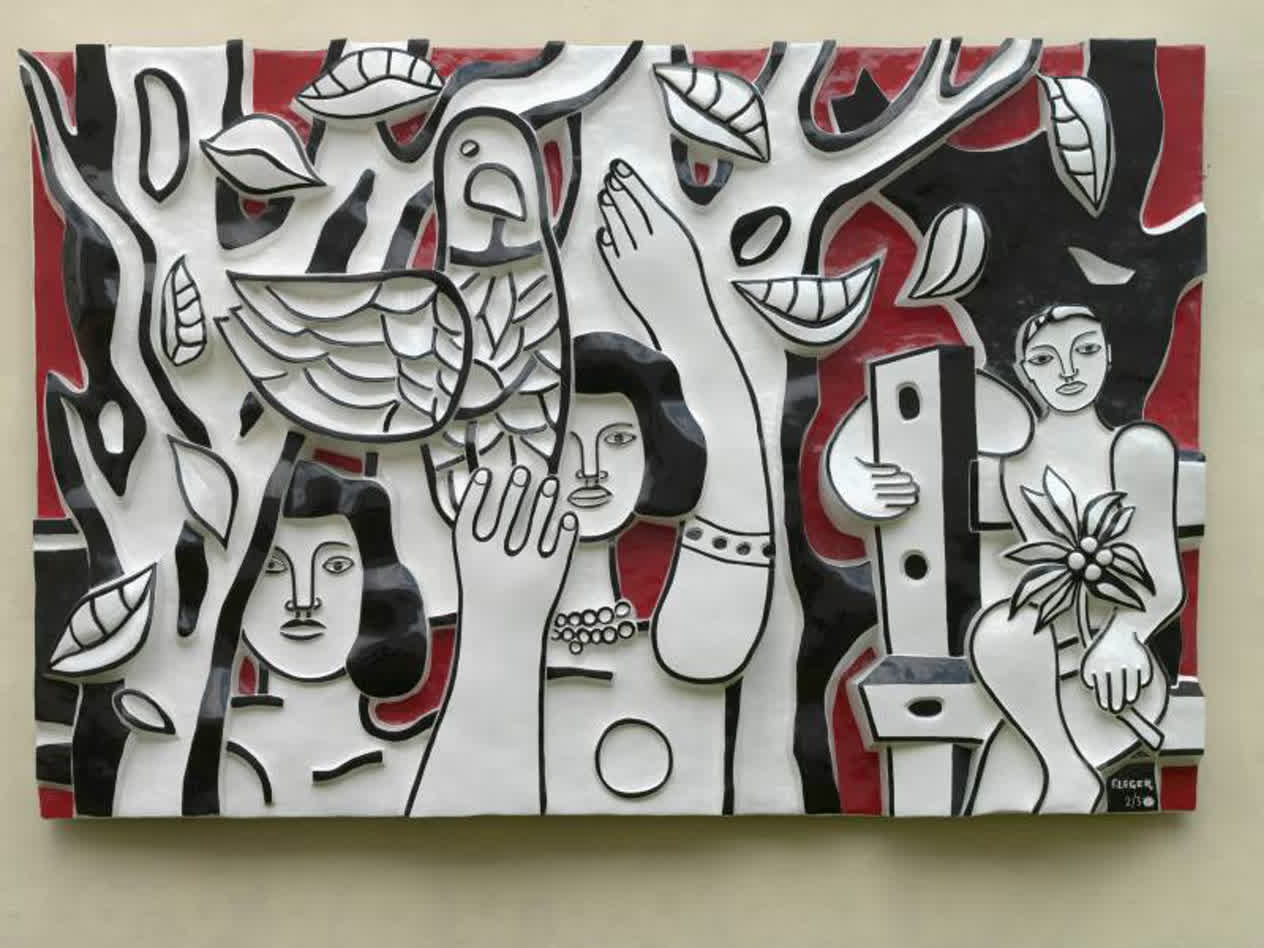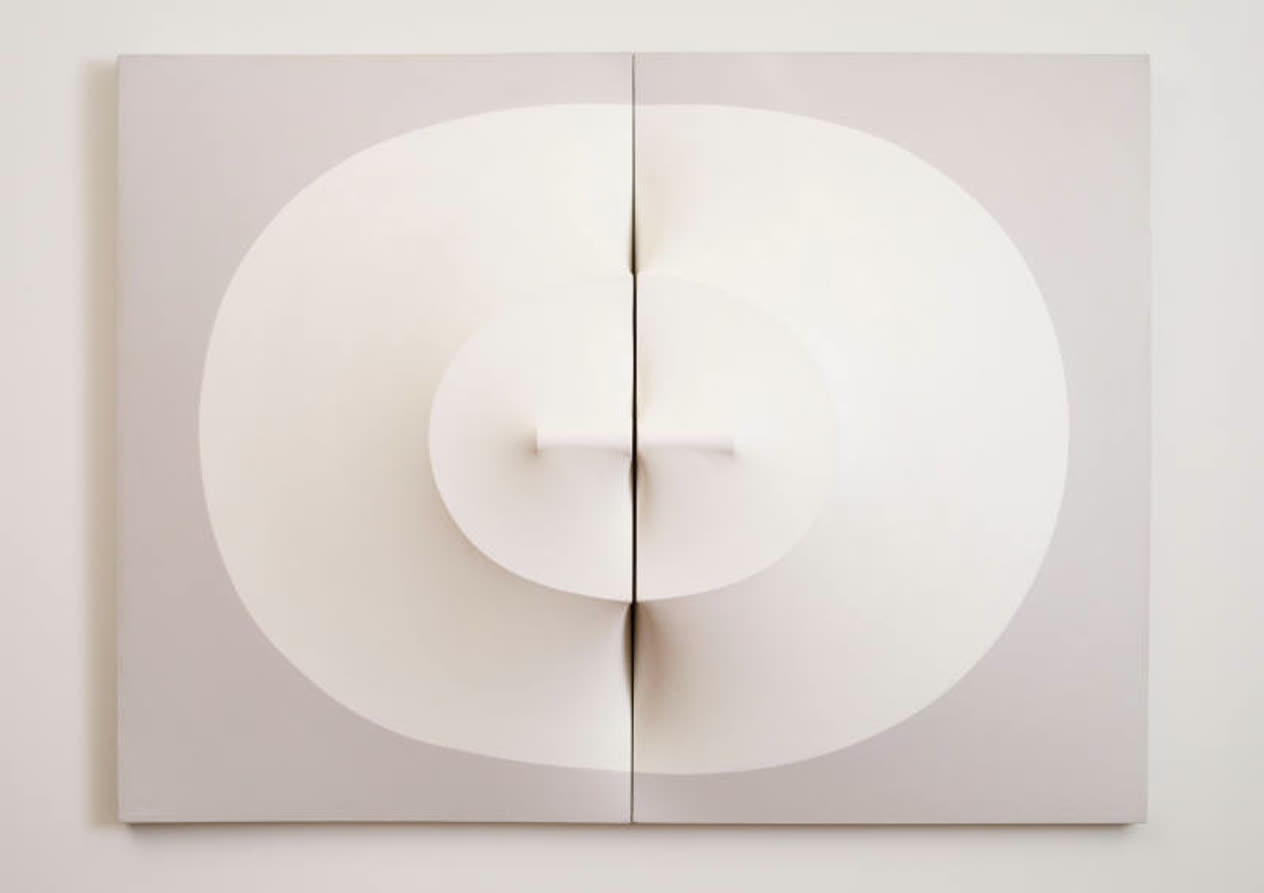Robert Rauschenberg Love Hotel [Anagram (A Pun)] 1998
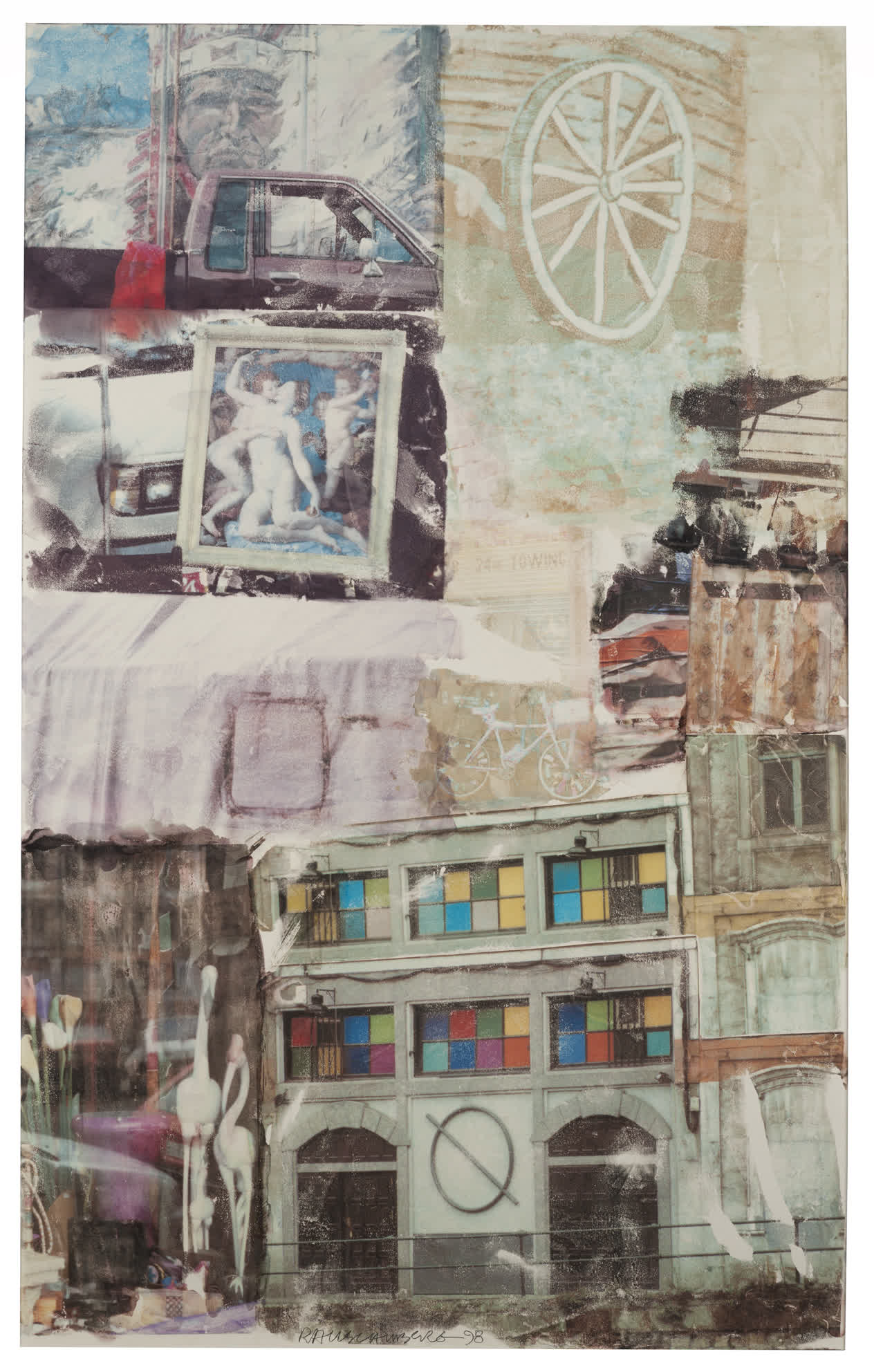
© 2022 Robert Rauschenberg Foundation / Licensed by VAGA at Artists Rights Society (ARS), NY

Robert Rauschenberg is often considered a pivotal bridge between Abstract Expressionism and Pop art. He is best known for his assemblage work which he began developing in the 1950s. His work brings together disparate elements, both two and three-dimensional, handmade and found, creating new meanings through juxtapositions between objects and images.
Alongside his work in painting, sculpture, and photography, Rauschenberg consistently worked in printmaking—as a way to collage together mass media images, personal photographs, and gestural mark-making within a two-dimensional and reproducible format. Developing long-standing relationships with print studios in the United States and abroad, the artist pushed innovative means of working and experimented with varied techniques. Love Hotel emerges from a body of large-scale prints Rauschenberg produced later in life, which combine found and original images, including cityscapes and art historical works through screen-printing.
Identification
Title
Love Hotel [Anagram (A Pun)]
Production Date
1998
Object Number
2013.4
Credit Line
Collection Pérez Art Museum Miami, gift from the Collection of Mary M. and Sash A. Spencer
Copyright
© 2022 Robert Rauschenberg Foundation / Licensed by VAGA at Artists Rights Society (ARS), NY
https://www.pamm.org/en/artwork/2013.4
Copy artwork link
Physical Qualities
Medium
Vegetable dye transfer on polylaminate
Dimensions
98 x 62 inches
Visual Description
Robert Rauschenberg’s Love Hotel [Anagrams (A Pun)] is a dye transfer print on polylaminate. This print measures ninety-eight by sixty-two inches, or around eight feet tall by a little over five feet wide, in portrait orientation.
This large format print has a collaged composition. The larger image is made up of a collection of seemingly random images placed next to one another. Either due to the technique of the printing process or the image sources, the overall artwork looks weathered and the colors are washed out and dull, as if exposed to too much light.
If one were to describe the images like the order of written words on a page, starting at the top left is the face of a Native American man wearing a traditional feathered headdress. His face is barely visible, giving it a ghost-like appearance as it floats above the maroon cab of a pick-up truck seen from the side. Moving to the right across the top of the print, the image abruptly changes to show a drawing of a wagon wheel. It is large, wooden, and circular, with eleven spokes. It rests on a green surface.
Moving down along the left-hand side of the print, beneath the maroon truck, is the headlight and fender of a white van. Moving toward the right, in front of the van rests a large painting. This painting obscures the hood and bumper of the white van, lending this painting a height of at least three feet. It has a gilded frame, and the canvas has several classically posed nude figures painted on its surface. Moving further to the right, past the center line of the print are patches of faded green, pink, and yellow, as well as some images of rust covered surfaces.
Reaching the middle left of the print is a large, pale white sheet covering an oblong object, abruptly followed by the outline of a bicycle.
Extending toward the bottom third of the print, starting on the left is the reflection of a storefront window, with flamingo ornaments and other goods on display, with cars parked on the street reflected in the large panel of glass. Moving to the right along the bottom of the print is a three-story building. It has two archways on either side of the ground floor, with a circular decoration on its façade between the two arches. The second and third story both display three wide rectangular windows, further divided into eight squares each. Along both of the upper floors, the grid-like windowpanes are filled in with a rainbow of different colors, red, magenta, yellow, green, blue, and cyan. On the lower right corner of the print, is the image of another three-story building, however, not quite lining up with the building just described. The bottom two stories have decorative arches, and the top story carries a window with a fully black interior. Alongside the bottom of the print, in front of two side by side buildings, is a black railing along a raised sidewalk.
Overall, the crammed and crowded collage gives the impression of a convoluted and decayed cityscape.






